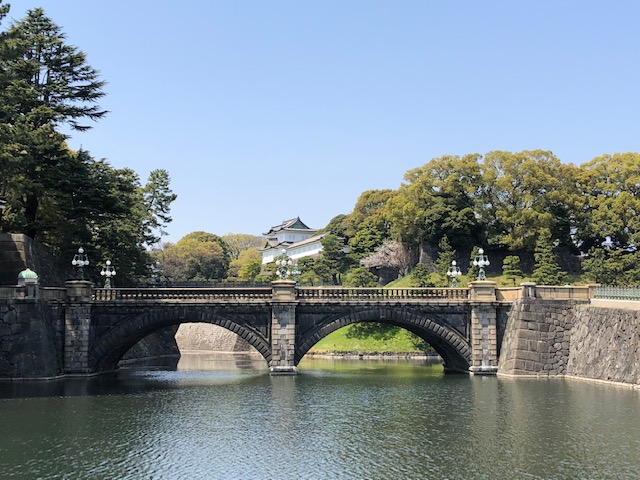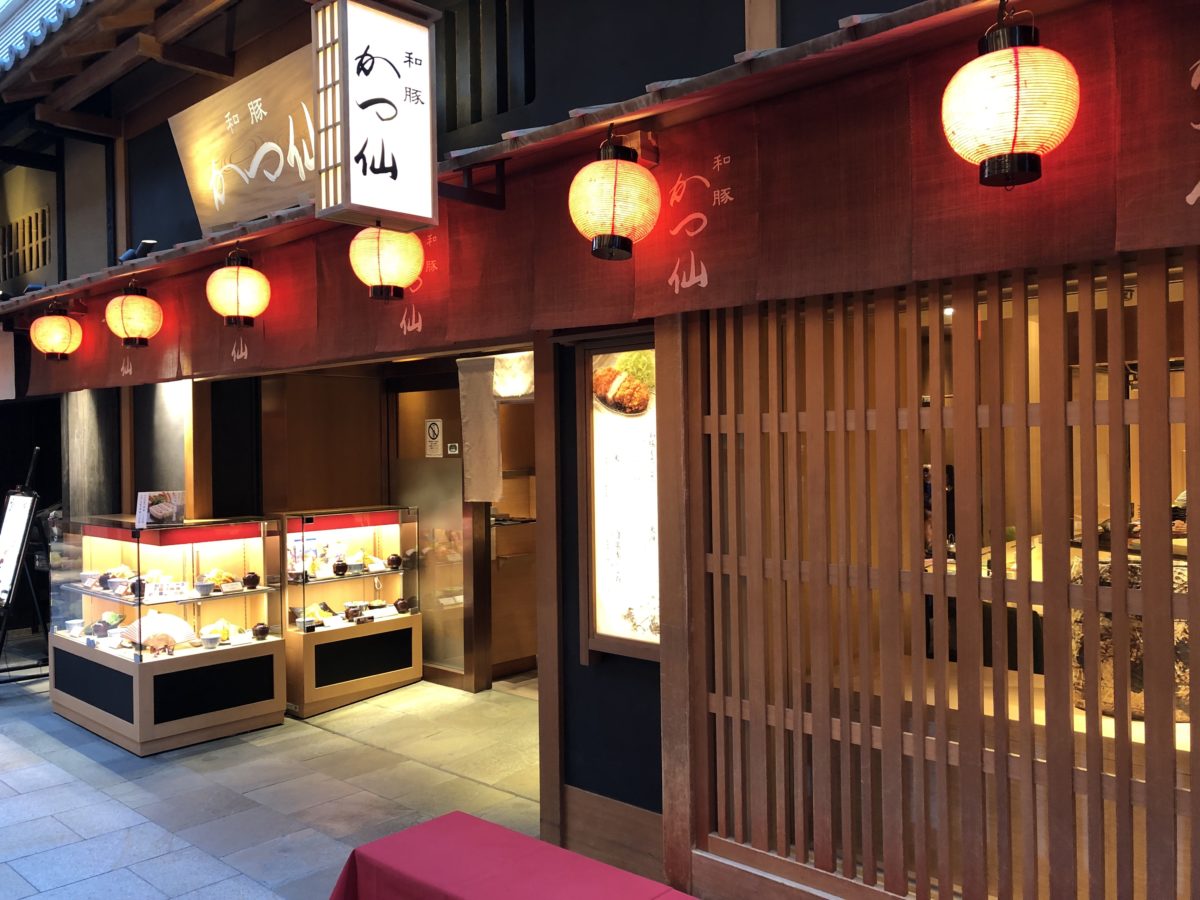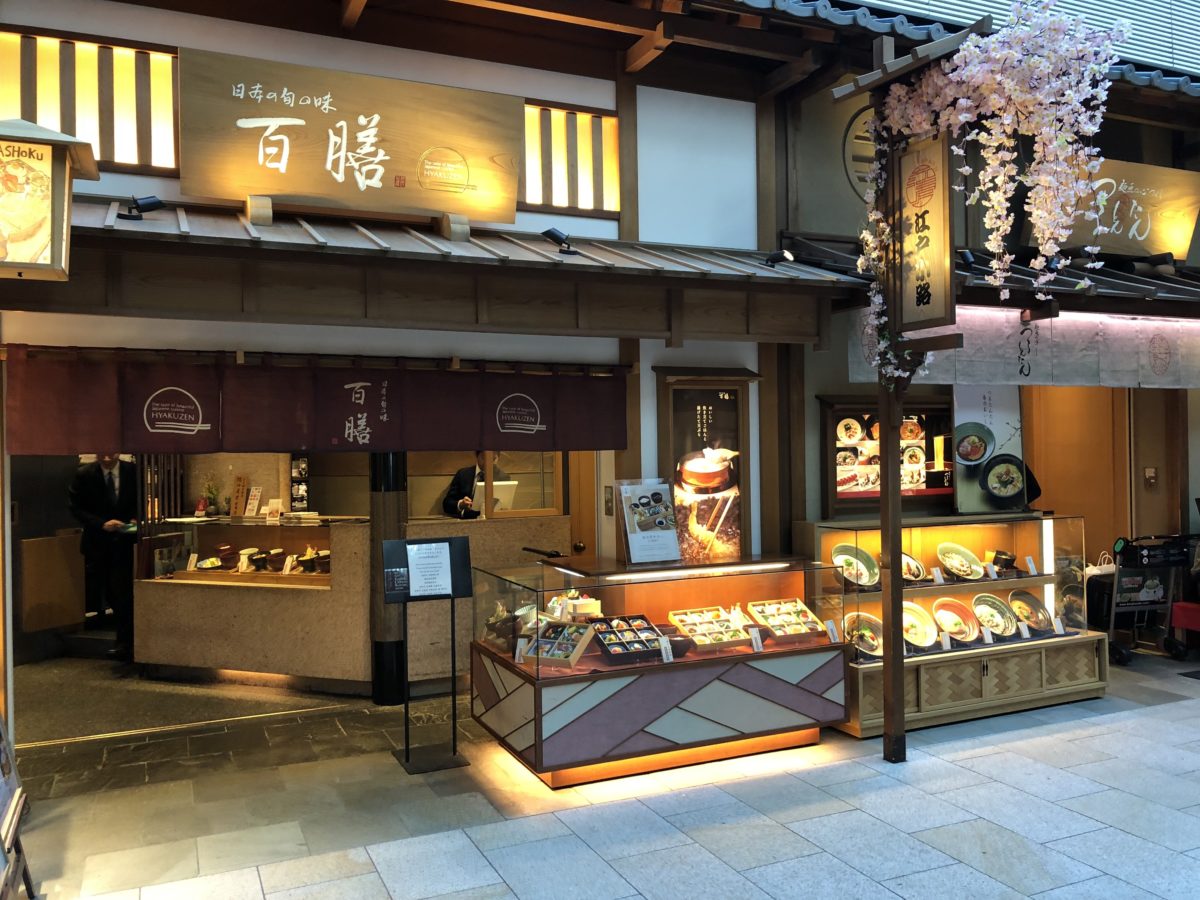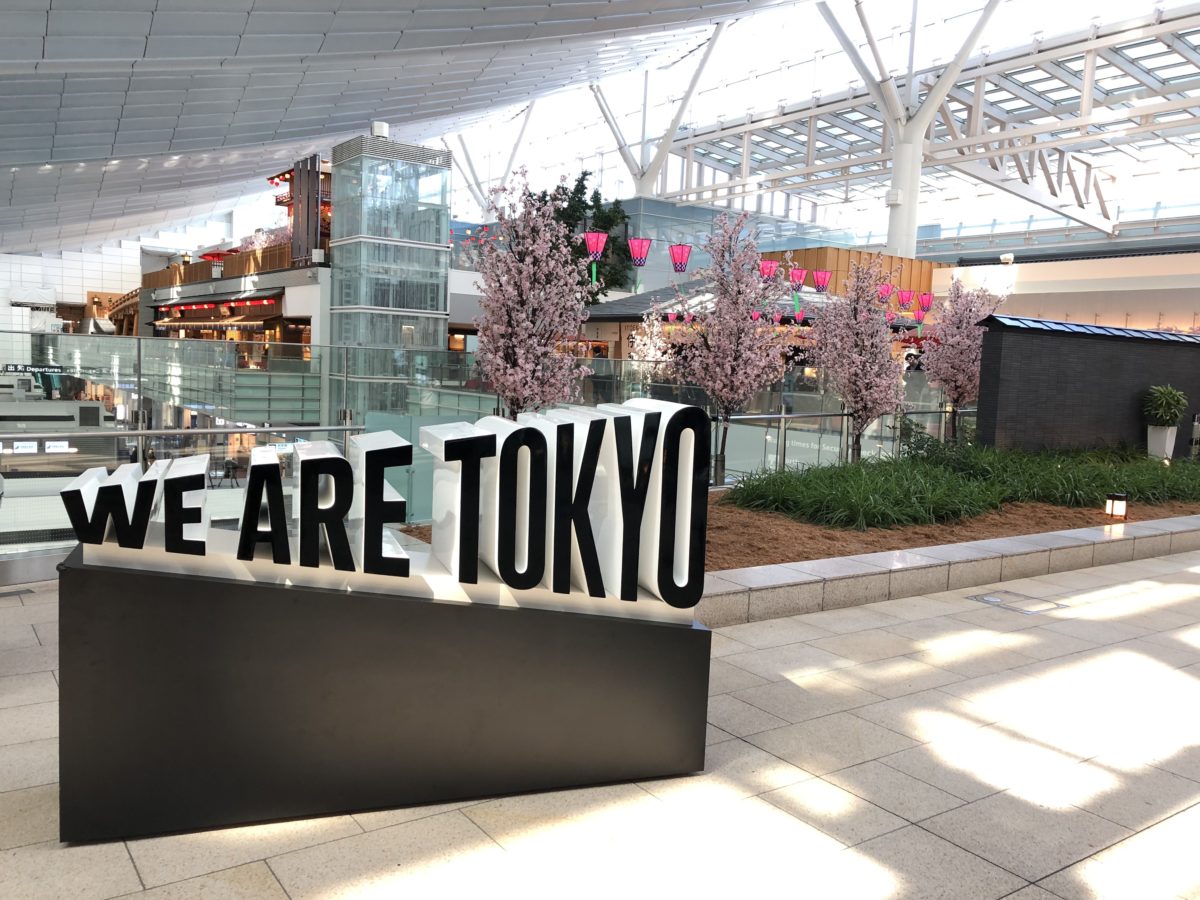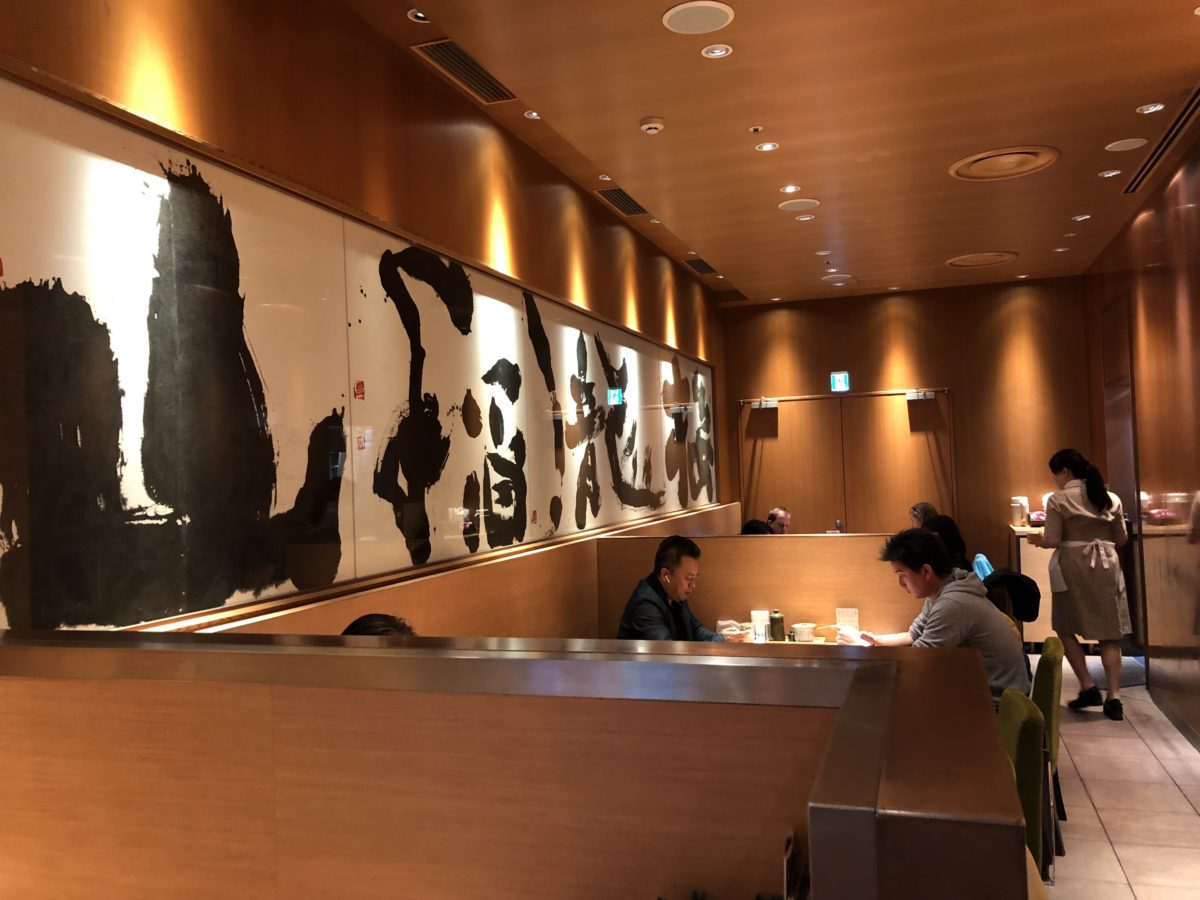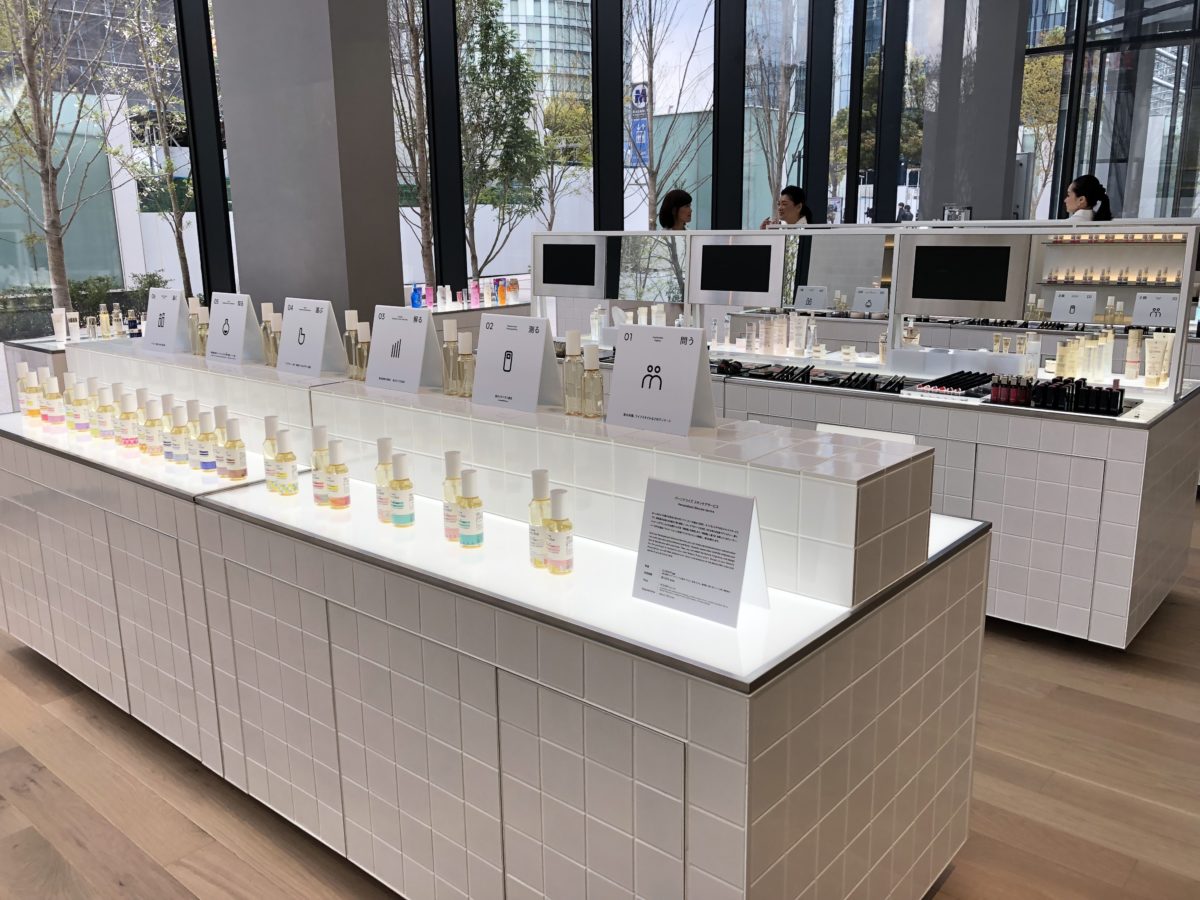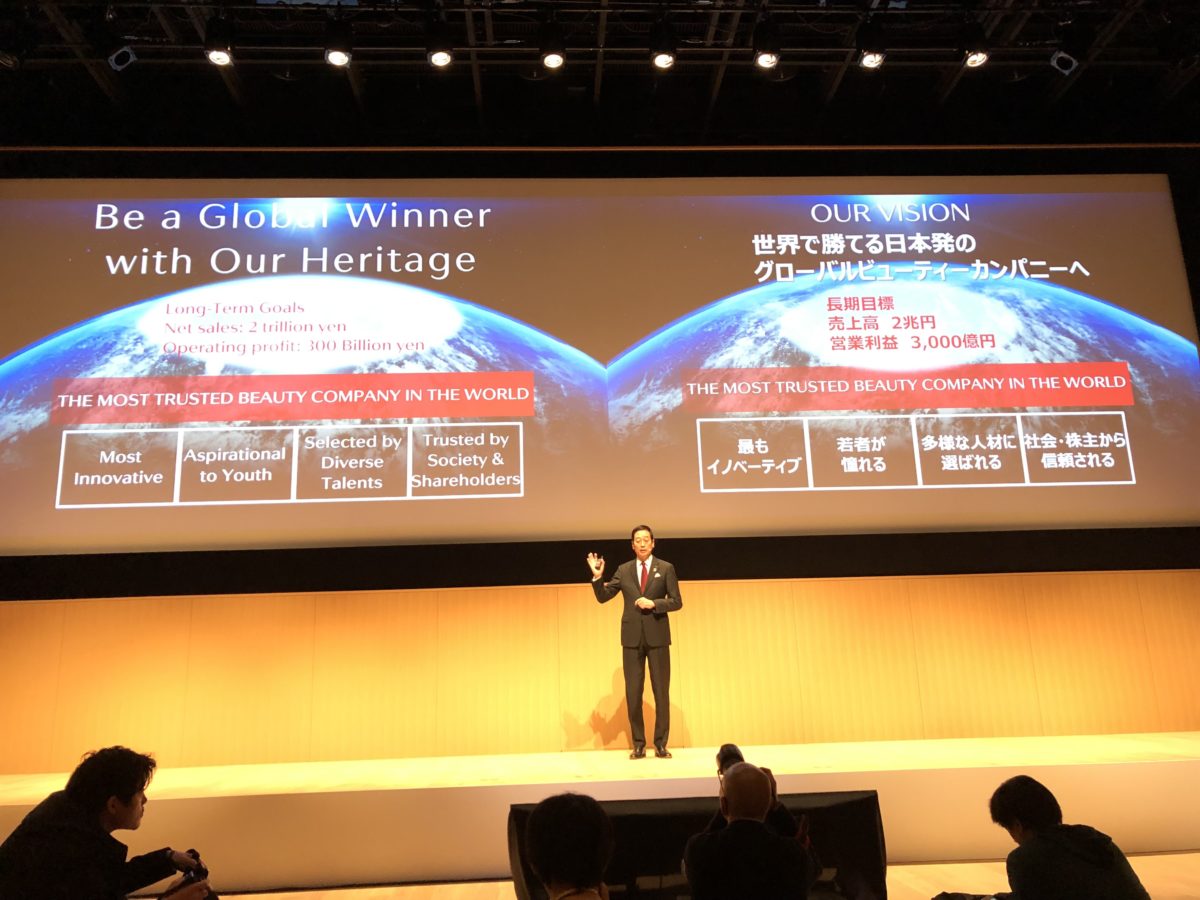SATURDAY 6 APRIL
We’re on location in Japan at an auspicious time for the country, and not just because of the famed ‘sakura’ or cherry blossom season that brings such beauty to the Spring landscape. Japan’s imperial succession has been planned for some time, with the ascendance of Crown Prince Naruhito to the throne on 1 May, replacing his father Emperor Akihito who is abdicating.
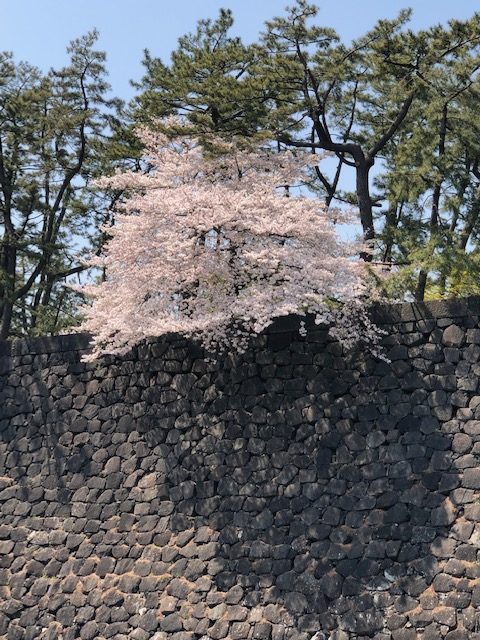
Full bloom: A cherry blossom in the Imperial Gardens in Tokyo (below); thousands of overseas visitors come to Japan just to see these trees in the short period until their flowers disappear.
But the choice of the new ‘era’ that this will herald was only announced by a government committee on 1 April, making headlines around the world. From 1 May we will enter the era (or ‘gengo’ in Japanese) of Reiwa, with ‘rei’ meaning auspicious and ’wa’ meaning harmony or peace.
It leaves behind the current era, Heisei, (meaning to achieve peace), which began in 1989 upon the death of Emperor Hirohito, whose era was known as Showa. Heisei began amid high hopes that Japan would play a greater role in world affairs after its decades of economic growth, notes The Japan Times, but its economy imploded soon afterwards, ushering in a long period of stagnation.

An auspicious announcement: Reiwa was introduced to Japan and the world this week, and begins on 1 May.
Speaking to people here you gain a sharp and immediate understanding of how deeply they love and respect the Emperor, and his importance to the nation. There is great pride in the office but also in how the era system separates Japan historically from the rest of the world. The new era will be the 248th, and Japan has used this system (which began in China) to indicate the year since 645. According to leading newspaper Mainichi Shimbun, 34% of Japanese still use the era system rather than the Western calendar to chart time, though it is in sharp decline. This figure compares to 82% in 1975.
The name of the era is seen as reflective of the times we live in and it has practical implications too: government departments use official stamps and papers with the name of the era, so these will have to change, as will coins (over time).
The new era makes it an exciting time to visit Japan. In travel retail, we are also seeing some changing dynamics.
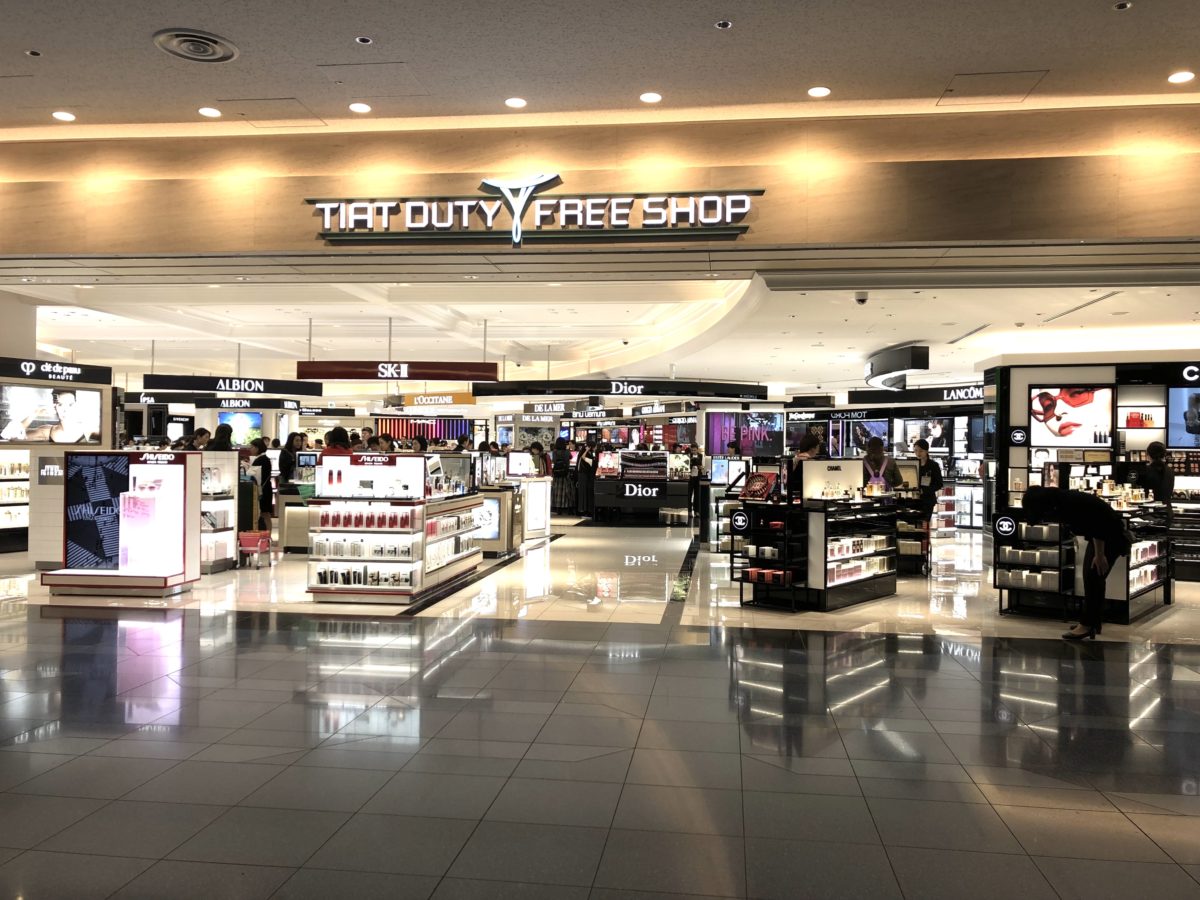
The expanded JATCO-run TIAT Duty Free Shop at Haneda Airport’s International Terminal; one of many store investments already completed or planned by travel retailers over the next year at leading airports.
At first glance, the outlook is very positive. Inbound travel to the country continues to soar, as the ambitious government target of 40 million visitors by 2020 looks set to be reached, perhaps even in 2019.
That surge is being driven by China, as it has been for the past five years, and among shoppers it continues to be led by the allure of the ‘Made in Japan’ label. That means Japanese cosmetics, food & confectionery, technology and liquor (mainly sake as premium Japanese whisky is almost impossible to source).
Every travel retailer we have met (mostly in Tokyo; we visit Kansai on Monday) is devoting more and more space to Japanese goods. That has taken firm shape in the expanded JATCo store at Haneda Airport’s International Terminal and in the new Fa-So-La Duty Free Stars new concept at Narita T1.
And the inbound travel wave has undoubtedly helped lift the travel retail business. Most of the airport retailers we have met report double-digit sales increases in the financial year to 31 March, making 2018/19 a powerhouse year.

Japanese confectionery sales are booming for most travel retailers, with Tokyo Banana, Royce and Ishiya among the biggest sellers.
However, the heavy reliance on Chinese consumers is a concern. Many companies are watching closely the impact of China’s new e-commerce law introduced on 1 January, and in particular how it affects the daigou business, which has played a part in driving sales in Japan in recent years. Stricter controls in China on the import of goods appear to be having some impact in softening Chinese spend, though as yet it is difficult to quantify, say retailers.
It is not just a factor in cosmetics either. Sales of Philip Morris brand IQOS have been akin to a runaway train in duty free in recent years, with Chinese fuelling the surge. But IQOS is not available in China and sources say that targeting of imports into the country (before re-sale online) has intensified recently, with Japanese flights singled out for special attention by China Customs.
Although the daigou business looks set to play less of a role, most people we have spoken to are confident that a new wave of Chinese consumers will lead overall sales growth for some time to come. Not many, it appears, want to consider how the future could look if a serious dispute (rather than simmering tensions) breaks out between the Japan and China governments and curtails or halts inbound tourism.

Chinese shoppers in the expanded tax free zone at the Lotte Duty Free Ginza store; these shoppers’ focus is more on face masks and supplements than luxury brands in downtown duty free today.
We are here only a few months before the 2019 Rugby World Cup and just over year before the eagerly anticipated 2020 Olympic and Paralympic Games. Branding for the Olympics is much more evident at this stage, and awareness about the rugby appears quite low, though no doubt it will be well supported and superbly hosted when it comes around in September.
Travel retailers don’t believe there will be a significant sales bounce from either event, but the timing of the Olympics in particular has helped bring forward much needed infrastructure development. The aforementioned store openings and expansions are among them, with all retailers scheduling work to their stores in the next 12 months.
Airports are also ramping up their activity, with 2020 as an initial target but with the long-term expansion of Japan’s aviation capacity the key goal. Conversion of part of Haneda’s domestic terminal to international flights is one outcome, with retail space allocation to be agreed (it will involve a split between existing operators JATCo, ANA Trading, JAL-DFS and NAA Retailing). Haneda is also adding 39,000 flights a year ahead of the Olympics, many of them from Narita.
It’s not only an airport story in Japan. It is also fascinating to see how the new channels of business (downtown and arrivals) are emerging, although not without pain along the way.

Clé de Peau is the best-selling brand at the ANA-Shilla-Takashimaya store in Shinjuku, Tokyo, where the retailer has rightly focused heavily on Japanese beauty; downtown duty free overall is a tough business today though.
The downtown duty free business remains lacklustre, although it has shown some improvement on increasing China inbound numbers. It’s clear that the retailers would refocus much of their space on Japanese skincare, confectionery and other tax free items if they could. But long contracts struck with underperforming luxury brands (with some exceptions, notably in luxury watches) present a challenge. The challenge to profitability (already acute) is also held back at stores that rely on group tours (such as Lotte Duty Free in Ginza) by high tour operator commissions.
Arrivals duty free is much smaller, but appears to be showing signs of life even from the tiny spaces allocated to it by airports. It’s almost entirely a tobacco business (over 90% at Narita for example) but offers a useful channel to encourage sales among returning Japanese travellers. Beauty is also permitted to be sold in the channel since last year, though there is almost no space to merchandise the category well so it is likely to remain limited for now.
This year and into next, we will see more change in the market. On the positive side, many of the older, tired-looking store environments will be upgraded to present a fresh face to Olympics visitors. But every retailer is hoping that this investment doesn’t come just as Chinese spending dips. The first half of the new Japanese fiscal year (from 1 April) will offer plenty of clues about how the future of Japanese travel retail will shape up.
****
WEDNESDAY 3 APRIL
Each time I visit Tokyo Haneda Airport, I’m reminded of exactly why it is ranked towards the top of the consumer-voted Skytrax list of the world’s best airports each year. As we reported last week, Haneda was second only to Singapore Changi in the voting for World’s Best Airport, Changi having won for the seventh year in a row.
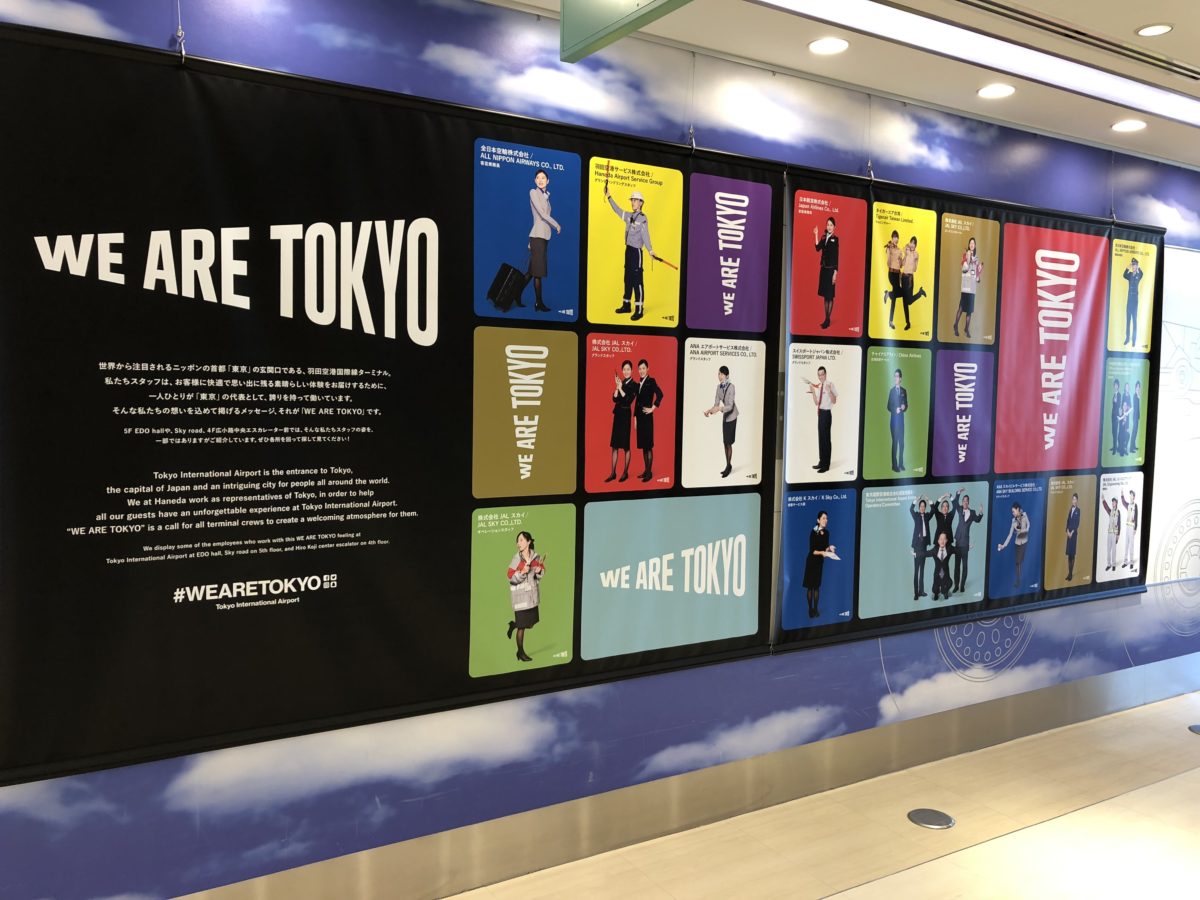
Power to the people: The ‘We are Tokyo’ slogan that embodies the consumer-facing attitudes of Tokyo Haneda staff across departments and roles.
Not only is Haneda in good company here, it tops several category rankings too, among them for World’s Cleanest Airport (check out the spotless toilets if you ever pay a visit, as I did today); and for Most Accessible Facilities, another important accolade that speaks to how Tokyo International Air Terminal (TIAT) treats disabled guests.
When you’re here you can see the guest welcome first hand. The ‘We Are Tokyo’ slogan isn’t just words; it’s carried around by staff here like a badge of honour.
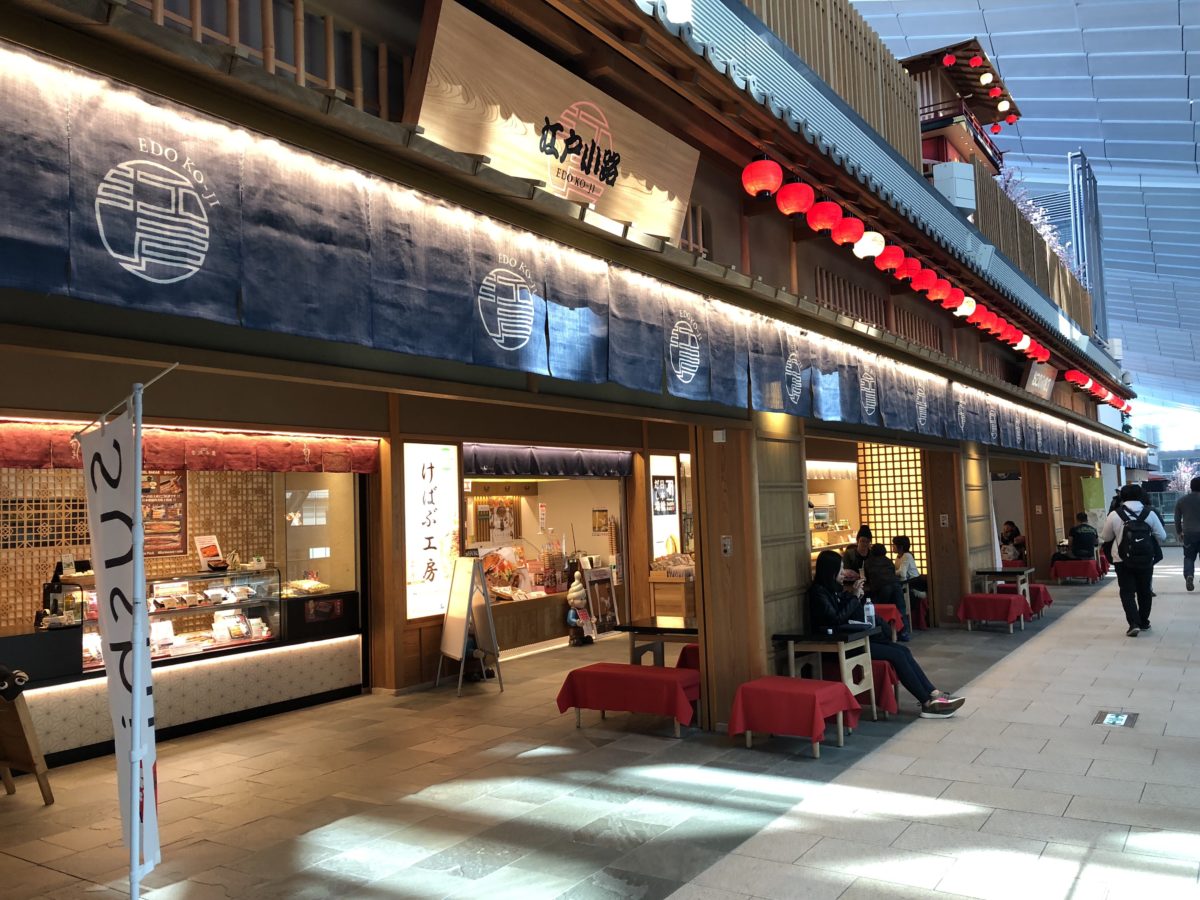
You want variety? You got it here at Haneda. (Note also the neat little touches such as the red cloth covering the public benches, here and across the terminal, to add to visitor comfort; how many airports do that?)
What mystifies me though is that Haneda is never ranked high on the Skytrax list for Best Airport Dining (won this year by Hong Kong International). For me, in the traditional-style Edo Market landside, Haneda has some of the most diverse and exciting food options of any airport in the world.
There’s a smattering of international but really it’s all about Japan. Do you want sushi? Haneda has got it, in several locations. Tonkatsu? Tick. Ramen noodles. Tick. Yakiniku. Tick. Sukiyaki or Shabushabu? Tick and tick again. There’s even a counter that only sells eel, but magnificently soft, succulent and slow cooked, far from the rubbery texture you might expect if it was served to you in Europe.
I made a point of arriving early at Haneda today before my meeting with TIAT/JATCo, simply to dine. In the end I went for tonkatsu, where in the restaurant I chose you are greeted like a long-lost friend (even though nearly everyone is passing through), where the pork cutlet melts in your mouth and where the service is polished and professional.
I later asked about Haneda’s reputation for food and it was explained to me that the lack of airside space devoted to the category is a key reason for its relative standing in Skytrax. That and the fact that it is almost solely Japanese, with no Starbucks and no McDonalds, to which some overseas guests take exception.
My reaction? Don’t dilute the Sense of Place! Those international brands do a fine job serving vast numbers of customers and making money for their partners and for airports, but they don’t have to be everywhere. In Japan, where the food is so exceptional, and where even within Japanese cuisine there is such diversity and discovery to be made, why would you opt for anything else?
My visit to Haneda is part of a whistlestop tour of key travel retail locations in Japan. I began with several memorable days in the company of the Shiseido Group, its media team and (on Tuesday) its senior management, for the opening of its Global Innovation Center in Yokohama.
It’s a milestone moment for the beauty house as it targets the next wave of growth, with travel retail a key platform.
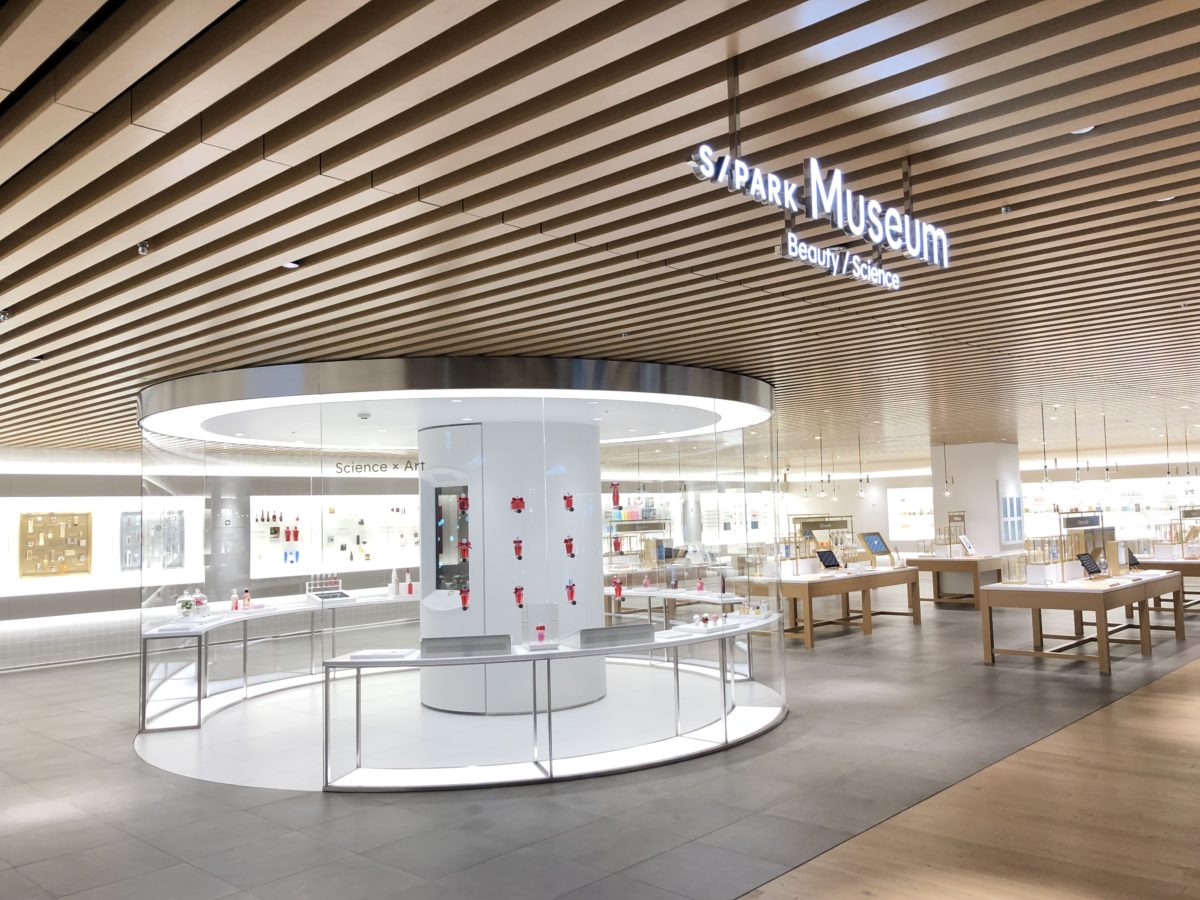
The Shiseido GIC celebrates 100-plus years of research in beauty, and the brand’s impact on Japanese society. Below, the Beauty Bar, where visitors can have their skin analysed and a bespoke formula created.
The site is state of the art and stunning, with spaces created for interaction with the public – unusual for an R&D facility but a move that makes perfect sense. And crucially, it’s not just about product development; Shiseido wants to be at the forefront of changing societal attitudes to women’s roles, the environment, ageing and its innovations (and the people who drive them) will reflect that.
We had a fascinating group interview on Tuesday with President & CEO Masahiko Uotani, who was candid about the journey that Shiseido has taken on female empowerment, sustainability and other issues, but freely acknowledged that there is much more to do, and that in conservative Japan making it happen is no easy task.
It was refreshing to hear a CEO be as open about his own company, category and society in this way (the interview in full will appear soon), and to see Shiseido taking the responsibility of leadership with action and not just words. The next steps on its journey will be fascinating to watch.


